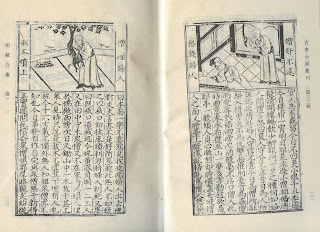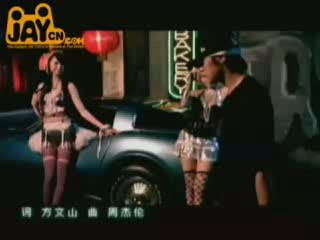Allow me now to introduce the subject of this post:

As we all know, what happens in France...doesn't stay in France. Dr. Z had himself some bontemps and returned to take up a post as Professor of Philosophy at his alma mater, but then was ejected summarily after publishing Sex Histories (性史), at first called Sex Histories Part I, in 1926. Over the winter holidays (Coincidence...? Nay, gorging on food and being huddled inside makes everybody think about perversity, a universal condition across the distances of time and space.) Zhang sent out surveys to university students in the city, then edited together some of the responses into a book. Infamously, Sex Histories flew off the shelves and caused all manner of ruckus, including massive traffic jams. Its twelve accounts range from one by his then-wife, entitled "My Sexual Experiences," to "Looking Back On Gaining Knowledge in Childhood," by one "Jing zai" (roughly, "Respectful Dude").
As Haiyan Lee has described, Dr. Z's aesthetics mixed utilitarianism, German Romanticism, iconoclasm, social-Darwinian eugenics, and radical social utopianism into a hearty stew in which "beauty" became something each citizen of the "Republic of Beauty" had to diligently create and scrupulously uphold. This fantastic land, while full of apparent forward-thinking--viz. Dr. Z's resolute advocacy of nude, mixed-sex outdoor exercise--was decidedly not liberal or even individualistic: Beauty came in the singular, and one either met its criteria through the proper cultivation of one's erotic and aesthetic body, or one failed and became a threat to the overall beauty of society. "Nymphomaniacs," same-sex sexual liasions, and even women who wore trousers were all regarded Un-Beautiful, and warranted "correction"-- in the former case by labial surgery. Ideal men were tall, had deep orbits, high-bridged noses, and broad shoulders--that is, not Chinese. In short, Dr. Z's ideology presents another troubling example of how ideas that seem like they should be worthy of celebration and colorful parades also come with a mandatory set of less palatable accompaniments: in this case, personal liberation simultaneously endorsed with fascist domination through "biopower" remind us again of the extent to which authoritarian ideals were inextricable from the global development of modern state and society.
With that schpiel out of the way, I should note that Dr. Z's fate was an unhappy one: after the sensational publication of Sex Histories, Part I, he prepared a manuscript for a sequel (in which he planned to write about his own experiences) and was on the cusp of submitting it for publication when the backlash hit. Media appended him with snide nicknames, including "Dr. Sex," "Dr. Prostitution," and "Great Licentious Worm."** He held onto the manuscript, but the eagerly awaited Part II appeared anyway--and, according to some sources, the series magically continued until Part X. Zhang put furious ads in the papers declaiming against the people who were stealing his name brand, but to no apparent avail.
This brand was evidently still powerful (if rather tinged with salacious implications) well into the later years of the Republic, because I was able to pull a dodgy-looking volume from the nether planes of WorldCat called Strange Stories of Sexual Desire: Interesting Histories of the Art of Sex (性欲奇谈:性艺趣史). Said volume was seemingly put out by Zhang's own publishing house, The Bookstore of Beauty, and has "Edited by Dr. Zhang" prominently displayed on the title page beside the photo of a rather uncomfortable-looking nude (the chaise lounge against which she awkwardly leans look decidedly scratchy). But there is exactly zero mention of the good Doctor in the contents; instead, "Medical Doctor Wei," who narrates these Interesting Histories appears to be a woman; her name is her sole identifying feature. Real editing was ostensibly handled by one Jiang Xiaoping. In other words, by the 1930s Dr. Z was clearly hot-stuff enough that his name could help hawk anything sexy.***
Anyhow, back to the reason you, my dear hypothetical reader, have bothered to scroll down this far: Dr. Zhang will now be answering your questions, educating YOU in order that you may become a better citizen of the Republic of Beauty!
(1)On "harmonizing before having sexual intercourse":
"...first it is necessary that man and woman enter the realm of beauty at the same time. ...If either one has not yet entered the realm of beauty, that one suffers qualms throughout the night. ...In this instance I think it's best for the one who can't sleep to go to another room, read books related to all kinds of sexual learning, and supplement knowledge for the next occasion."****
(2)On female ejaculation:*****
"Women possess many types of nether fluids: one type is fragrant water and emerges from within the clitoris. The second type is vaginal fluid, and is discovered when the penis is in contact. The third is "Bartholin fluid," which is a type of fluid from the glands at the vaginal opening and is expelled only when the woman fully comprehends the joys of sex and is fully satisfied. When expelled, it shoots far [lit. "hits far away"] like a man's ejaculate. ... When this "third type of water" is expelled, the woman is as if drunken or dazed...then she becomes tired afterward, much like the state before and after male ejaculation. ...From this "example from nature," [during female ejaculation, paralleling the male's delivery of sperm,] the ovaries must be working intensely to send the ovum [lit. "egg beads"] down to the uterus to fuse with the sperm [lit. "seminal bugs"]."
(3)On changing oneself into a "beloved" husband:
"...when he awakes in the morning he should comb his hair prettily. If his wife dislikes the beard, then everyday he must not forget to shave assiduously like the overseas Chinese students in America. He should always be dressed in up-to-date fashion. ..."The greatest taboo is to come into touch with [your wife] when she is in a bad humor." ..."It is best if you and your wife live in separate houses, but if you can't you mustn't forget to partition the room or at the very least to sleep in separate beds."
(4)On "strengthening weaknesses of the sexual organs":
"the man should frequently wash his privates in cold water...avoid having intercourse excessively and must not use aphrodisiacs. He should also be diligent in washing his body."
"...woman's laxness is an extremely common defect in our country...they have never even once made an injection into the private parts and they are particularly indifferent to washing. Therefore their flesh is unhealthy and it prevents the development of sexual desires...when menstruation has finished one should inject water once into the vagina and usually do this several times monthly. Again one must bathe continuously....after washing, rub with a soft cloth until the flesh gets warm and desist when you feel like you're generating electricity. ...At the time of intercourse you must come to it with enthusiasm and conduct yourself with courage."
"...the sexual organs are overly concealed [in children]." [Zhang next describes a type of open-crotch pants for small children.] "...this is good, for in this way the sexual organs are continuously exposed to the outside air and the feelings of sensation are fostered. Secondly ...daily if possible, wash the child's sex organs and after washing rub them until they are warm. Thirdly, think of ways to prohibit masturbation and other similar kinds of dissipation..."
(5)On the proper conduct of intercourse:
"First, the number of times that the male ejaculates...should not be excessive and the sperm must not be ejaculated too quickly....Once or twice a week is sufficient for those in the prime of life....However the time for one occasion must be lengthened, at least more than twenty minutes and better if extended to from forty minutes to an hour."
"The tempo can be helped by filling or emptying the urinary bladder...before intercourse it is good for the male to fully urinate and for the woman to store up her urine. ...[This] slows ejaculation while...accelerating...the "third fluid. ...The most important thing is that the woman take initiative. It is forbidden for her to...become like a wooden doll...never etiquette and formality or a training course in Confucian ethics."
***
What a delightful pudding of hyper-sensitivity to "hygiene" with a touch of an abiding fear of male enervation through excessive ejaculation ("spermatorrhea"), all infused generously with clear, "scientific," and fascistically arbitrary delineations of acceptable sexuality and deviance! Delicious. The good Doctor will be in all week to help with egg beads, third fluids, and generating electricity from your privates.
Good night, and don't let the seminal bugs bite!
*A.K.A. Revolutionville.
** Oh journalists!
***He's actually made quite a comeback in the Reform years, as a simple Google (or better yet, Baidu) sesh will indicate.
****He so smooth. Look at that shameless product placement! Oh Doc, I wanna be just like you one day EMAIL THIS ENTRY TO ALL YOUR FRIENDS.
*****All passages except this one are taken from Howard Levy's 1967 translation.






































